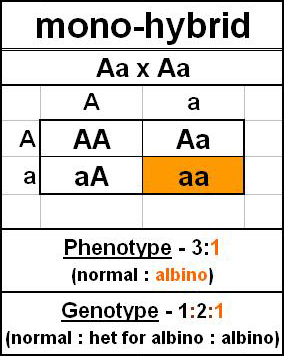Some couple wants to have children. The man has a sister with Albanism and the woman has a brother with Albanism. There are no other known cases in their families. What is the probability that their first child will have Albanism?
1 Answer
It depends on the alleles the man and woman inherited from their parents, who are heterozygous carriers of albinism.
Explanation:
It depends on whether either parent carries the recessive allele for albanism. Both the man and woman have parents who are each carriers, with each having a dominant and recessive allele. The following scenarios are possible.
-
Both the man and woman received only dominant alleles from both of their parents, and are homozygous dominant. In this case there is zero probability of having a child with albinism.
-
One parent received one recessive allele and one dominant allele , and is a heterozygous carrier, and the other parent inherited two dominant alleles, and is homozygous dominant. In this case, there is zero probability of having a child with albinism.
-
Both the man and woman inherited a dominant allele and a recessive allele from their parents, making them heterozygous carriers. There is a 25% probability that their first child and all future children will have albinism.
The following monohybrid cross represents the third scenario in which both parents are heterozygous for pigmentation.


